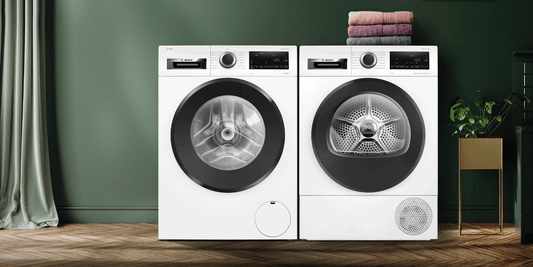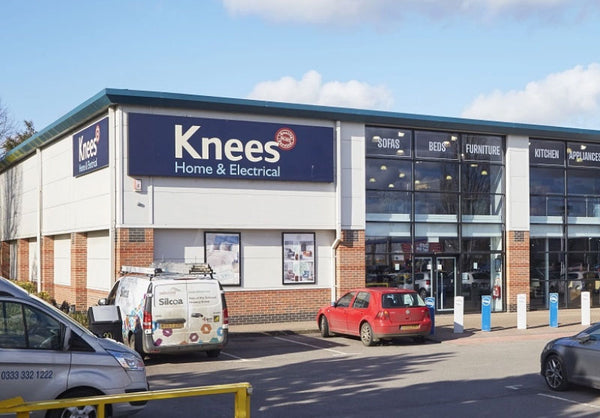How to choose the best tumble dryer to make washing a breeze
Ease the load of doing the laundry with this tumble dryer buyers guide
Tumble dryers in the UK have become a standard fixture due to the changing weather throughout the year. A washing line is fantastic in summer but drying clothes becomes more challenging during the winter. Hanging washing over radiators is far from ideal and can result in condensation, damp and musty odours. This is where a tumble dryer comes in.
Perfect for families and busy households, tumble dryers allow you to dry large amounts of laundry quickly and easily. They’re also handy if you don’t have access to an outdoor space.
Plus, some tumble dryers do not need to be in a specific location due to ventilation outlets. Condenser tumble dryers can be placed anywhere there’s an electrical outlet, for example, a utility room, conservatory or spare bedroom. Keep reading to find the best tumble dryer for you.
Summary
- Which type of tumble dryer is right for me?
- Common tumble dryer features
- Choose your size
- Freestanding vs. integrated
- Caring for your tumble dryer
- Installation & delivery of your tumble dryer
Which type of tumble dryer is right for me?
There are three main types of tumble dryers; vented tumble dryers, condenser tumble dryers, and heat pump tumble dryers. Here we discuss each type in more detail to help you find the best tumble dryer for you.
Vented tumble dryer
Vented tumble dryers are the most affordable type of tumble dryer on the market. But while they have a cheaper price point, they’re not as flexible as other models.
The water that is removed from your clothes during the drying process needs somewhere to go. A hose is connected from the tumble dryer and the moisture and hot air is then vented outside. This means the appliance has to be positioned next to an open window or by a hole in the wall.
Condenser tumble dryer
A condenser dryer has no need for a hose and so you can choose where you place the appliance. During the drying process, moisture is removed from your clothes and collected into a container inside the machine. In some cases, the machines can be connected in such a way that the water generated in the drying process is simply drained away like a washing machine.
Condenser dryers can be more expensive to buy and tend to use slightly more energy. However, they have the bonus of being able to be sited almost anywhere.
Some models are also fitted with a sensor that monitors the moisture levels in the clothes and then automatically ends the cycle when the items are dry. This prevents the machine from running for longer than is necessary, thereby reducing your energy bills and the impact on the environment.
It’s worth noting that sensor dryers usually work best in household temperatures. Using these machines in areas with a low temperature, for example, a garage can confuse the humidity sensor. If you are unsure whether a condenser tumble dryer is the right option for your home, please speak to a member of our team.
Heat pump condenser dryer
Heat pump condenser dryers are another option to consider. These machines work by recycling the heat inside the machine to enable drying. They can be up to 40% more efficient than a conventional condenser dryer, saving energy and ongoing costs.
These dryers tend to be more expensive to buy but with the lower power consumption, over the lifetime of the appliance, in most cases, you will save at least the difference in the purchase price – if not more. The moisture is still collected in a reservoir within the machine but on some models can be drained away as in a standard condenser dryer.
Common tumble dryer features
Iron dry
Use this setting if you like to iron your clothes straight from the dryer. It leaves your clothes with a higher moisture content, making them easier to iron.
Cupboard dry
This setting ensures your clothes will be dry enough to put away straight after the cycle has finished.
Extra dry
This setting is ideal for larger items such as duvets or pillows as it removes the most moisture and ensures everything is completely dry.
Sensor tumble dryers
These tumble dryers come with sensor drying technology, which uses a humidity sensor in the product. The sensor automatically switches the machine off when the humidity in the drum is low and the clothes are dry. This means you don’t need to set a timer as the machine will stop when your clothes are dry. Please be aware that sensor dryers work best in household temperatures.
Manual or timed tumble dryers
Manual tumble dryers require you to select a drying time for your load. This requires more guesswork than a timed tumble dryer. It’s likely that you’ll need to open the appliance door a few times during the cycle to check the level of dampness and to prevent overdrying. However, these models are more straightforward and are often cheaper than models with more advanced features.
Choose your size
The next consideration is the size of the drum. As a rough guide, a 7kg drum will be suitable for individuals, a couple, or a small family and up to 10kg is best for larger families.
Freestanding vs integrated
Another factor to consider when choosing the best tumble dryer is if you would like a freestanding or integrated model. A freestanding tumble dryer can go anywhere you have space, depending on whether it’s a vented or condenser model.
Integrated tumble dryers are designed to fit into a cupboard or under a counter. Again, please be mindful of needing a vent or using a condenser type machine. Condenser machines may well be the best option for built-in as they do not require a vent pipe, which may be expensive to install.
Caring for your tumble dryer
With any tumble dryer, it’s important to follow all instructions to keep your machine running at peak efficiency. This means not overloading the drum, removing water from the container, only inserting suitable clothes and cleaning the lint filters after each cycle.
Installation & delivery of your tumble dryer
We offer a free local delivery service to certain postcodes within a set radius of our stores. National delivery to postcodes outside of these areas is charged at £24.98 (appliances under 60cm wide).
As well as delivering your new tumble dryer, we can also remove your old appliance for a small fee. If you need help installing your tumble dryer, just let our team know and we will arrange this for you (additional fee applies).
Shop for tumble dryers at Knees Home & Electrical
We stock a wide variety of washer dryers from top brands you know and trust, including Bosch, Miele and Hoover, so you’re sure to find something to suit your budget. We have one store in Wiltshire, Trowbridge. We have a range of tumble dryers on display in-store, so you can take a look before you buy.
But you don’t have to live locally to buy your tumble dryer from us. We deliver across mainland UK using our delivery partner, and you can see and buy our entire range online.
If you need any help or advice, our helpful customer service team will be happy to assist you. You’ll be sure to find the best tumble dryer for you with us!
FAQ’s
How much does it cost to run a tumble dryer?
Vented and condenser dryers are more expensive and least efficient run. They average at around £60 to £80 a year. Heat pump tumble dryers are much more energy-efficient and cheaper to run. Depending on the model, they average at around £30 to £40 a year, but do take longer to dry your clothes.
Where is the best place to put a tumble dryer?
It is useful to keep your tumble dryer near your washing machine so you can transfer clothes easily from one machine into the other. Most manufacturers recommend that you keep your tumble dryer in a room with a minimum temperature of 10 degrees.
Where is the lint filter on my tumble dryer?
The lint filter on most machines is at the bottom of the door seal when you open the door. It is recommended that you empty this after every cycle.



